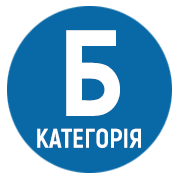BLENDED LEARNING IN DEVELOPING PROFESSIONAL ENGLISH COMMUNICATION SKILLS OF PROSPECTIVE SOCIAL WORKERS
DOI:
https://doi.org/10.25128/2415-3605.21.1.7Keywords:
prospective social workers, blended learning, English communication skills, web-technologiesAbstract
The article provides the rationale for the development of professional English communication skills of prospective social workers through blended learning, analyzes and grounds the peculiarities of blended learning aimed at developing communication skills. On the basis of the survey conducted among lecturers and social workers common intercultural situations have been determined. It is concluded that effective intercultural communication requires knowledge, lexical, phonetic and grammar skills, skills of spoken production and spoken interaction, linguo-sociocultural skills. The requirements to the level of prospective social workers’ English communication skills have been specified. It is concluded that blended learning should be a mixture of both concept based learning and collaboration-oriented learning with the face-to-face mode as the lead one; must be based on learner-centered and professional approaches, correspond to the determined principles (combination of face-to-face (approximately 65–70 %) and online (about 30-35 %) learning; students’ collaboration both online and face-to-face; students’ active involvement; effective communication between students as well as students and teachers; flexibility; regular and prompt feedback; personalization of the online environment); should involve different types of instructional Web-based technologies; incorporate various methods and techniques; focus on different types of tasks and activities including professional problem-based tasks; use different types and instruments of assessment (teacher assessment, computer marked assessment (e.g., testing vocabulary), peer assessment, self-assessment).
References
Metodyka navchannia inozemnykh mov i kultu: teoria i praktyka: pidruchnyk dlia stud. klasychnykh, pedagogichnykh i lingvistychnykh universytetiv [Methods of teaching of foreign languages and cultures: theory and practice: a textbook for university students]. O. B. Bigych, N. F. Borysko, G. E. Boreczka ta in.; za zagaln. red. S. Yu. Nikolayevoyi. Kyiv: Lenvit, 2013. 590 p.
Zadorozhna I. P. Teoretyko-metodychni zasady organizacii samostijnoi roboty majbutnikh uchyteliv z ovolodinnia anglomovnoiu komunikatyvnoiu kompetencieiu. Diss. dokt. ped. nauk [Theoretical and methodological foundations of self-study work organization on acquiring English language communicative competence. Dokt. ped. sci. diss.]. Kyiv, 2012. 770 p.
Aborisade P. A. Blended Learning in English for Academic Purposes Courses: A Nigerian Case Study. Blended Learning in English Language Teaching: Course Design and Implementation. B. Tomlinson, C. Whittaker (Eds.). London British Council, UK, 2013. P. 35–41.
Alberts P. P., Murray L. A. Stephenson J. E. Eight Educational Considerations for Hybrid Learning. Handbook of Research on Hybrid Learning Models: Advanced Tools, Technologies, and Applications. F. L. Wang, J. Fong, R. C. Kwan (Eds.). Information Sciences Reference: Hershey, PA, 2010. P. 185–202.
Allan B. Blended Learning: Tools for Teaching and Training. London: Facet Publishing, 2007. 227 p.
Allen I. E., Seaman J. Sizing the Opportunity: The Quality and Extent of Online Education in the U.S., 2002-2003. Needham, MA: Sloan-C., 2003. 32 p.
Anderson P. What is Web 2.0? Ideas, Technologies and Implications for Education. JISC Technology and Standard Watch. 2007. Available at: https://citeseerx.ist.psu.edu/viewdoc/download?doi=10.1.1.108.9995&rep=rep1&type=pdf.
Barnum C, Paarmann W. Bringing Introduction to the Teacher: A Blended Learning Model. T.H.E Journal. 2002. No 30 (2). P. 56-64.
BlendKit Reader. L. Futch and B. Chen (Eds.). 3d edition. Available at: https://blended.online.ucf.edu/blendkit-course-blendkit-reader-chapter-1/.
Bowyer J. Evaluating Blended Learning: Bringing the Elements Together Research Matters: A Cambridge Assessment Publication. 2017. Issue 23. P. 17–26.
Conrad J. R.-M., Donaldson A. Continuing to Engage the Online Learner: More Activities and Resources for Creative Instruction. Jossey-Bass, 2012. 176 p.
Driscoll M. Blended Learning: Let’s Get Beyond the Hype. E-learning. 2002. 3 (3). P. 54–56.
Dziuban C. D., Hartman J. L., Moskal P. D. Higher Education, Blended Learning and the Generations: Knowledge is power – no more. Elements of quality online education: engaging communities. J. Bourne, J. C. Moore (Eds.). Needham, MA: Sloan Center for Online. 2005. Available at: https://desarrollodocente.uc.cl/wp-content/uploads/2020/03/Knowledge_is_power_no_more.pdf.
Elliott D. Internet Technologies and Language Teacher Education. Handbook of Research on Web 2.0 and Second Language Learning. 2009. P. 432–450.
Ellis A. R., Steed, F. A., Applebee C. A. Teacher Conceptions of Blended Learning, Blended Teaching and Associations with Approaches to Design. Australian Journal of Educational Technology. 2006. 22 (3). P. 312–335.
Garrison D. R., Kanuka H. Blended Learning: Uncovering Its Transformative Potential in Higher Education. The Internet and Higher Education. 2004. 7 (2). P. 95–105.
Graham C. R. Blended Learning Systems: Definition, Current Trends, and Future Directions. Handbook of blended learning: Global Perspectives, local designs. Bonk C. J., Graham C. R. (Eds.). San Francisco, CA: Pfeiffer Publishing, 2006. P. 3–21.
Holmes B., Gardner J. E-learning. Concepts and Practice. SAGE Publications Ltd, 2006. 200 p.
Kudrik Y., Lahn L. C., Mørch A. I. Technology-enhanced Workplace Learning: Blended Learning in Insurance Company. Proceedings of the 17th International Conference on Computers in Education. Hong Kong: Asia-Pacific Society for Computers in Education. 2009. Available at: https://citeseerx.ist.psu.edu/viewdoc/download?doi=10.1.1.548.6711&rep=rep1&type=pdf.
Leithner A. Review of Blended Learning: Using Technology in and Beyond the Language Classroom. Language Learning & Technology. 2009. 13 (1). P. 33–39.
Littlejohn A., Pegler C. Preparing for Blended e-learning (Connecting with E-learning). Routledge, 2007. 298 p.
McDonald J. Blended Learning and Online Tutoring: A Good Practice Guide. Aldershot, UK: Gower, 2008. 203 p.
McGee P., Reis A. Blended Course Design: a Synthesis of Best Practices. Journal of Asynchronous Learning Networks. 2012. Vol.16. Issue 4. P. 7–22.
Mullamaa K. ICT in Language Learning – Benefits and Methodological Implications. International Education Studies. 2010. 3 (1). P. 38–44.
Pearcy A. G. Finding the Perfect Blend: A Comparative Study of Online, Face-to-face, and Blended Instruction. University of North Texas. Dissertations for PhD. Available at: https://digital.library.unt.edu/ark%3A/67531/metadc11015/m2/1/high_res_d/dissertation.pdf.
Siew-Eng L., Muuk M. A. Blended Learning in Teaching Secondary Schools’ English: A Preparation for Tertiary Science Education in Malaysia. Social and Behavioral Sciences. 2015. Vol. 167. P. 293–300.
Vaughan N., Garrison D. R. Creating Cognitive Presence in a Blended Faculty Development Community. Internet and Higher Education. 2005. 8 (1). P. 1–12.






